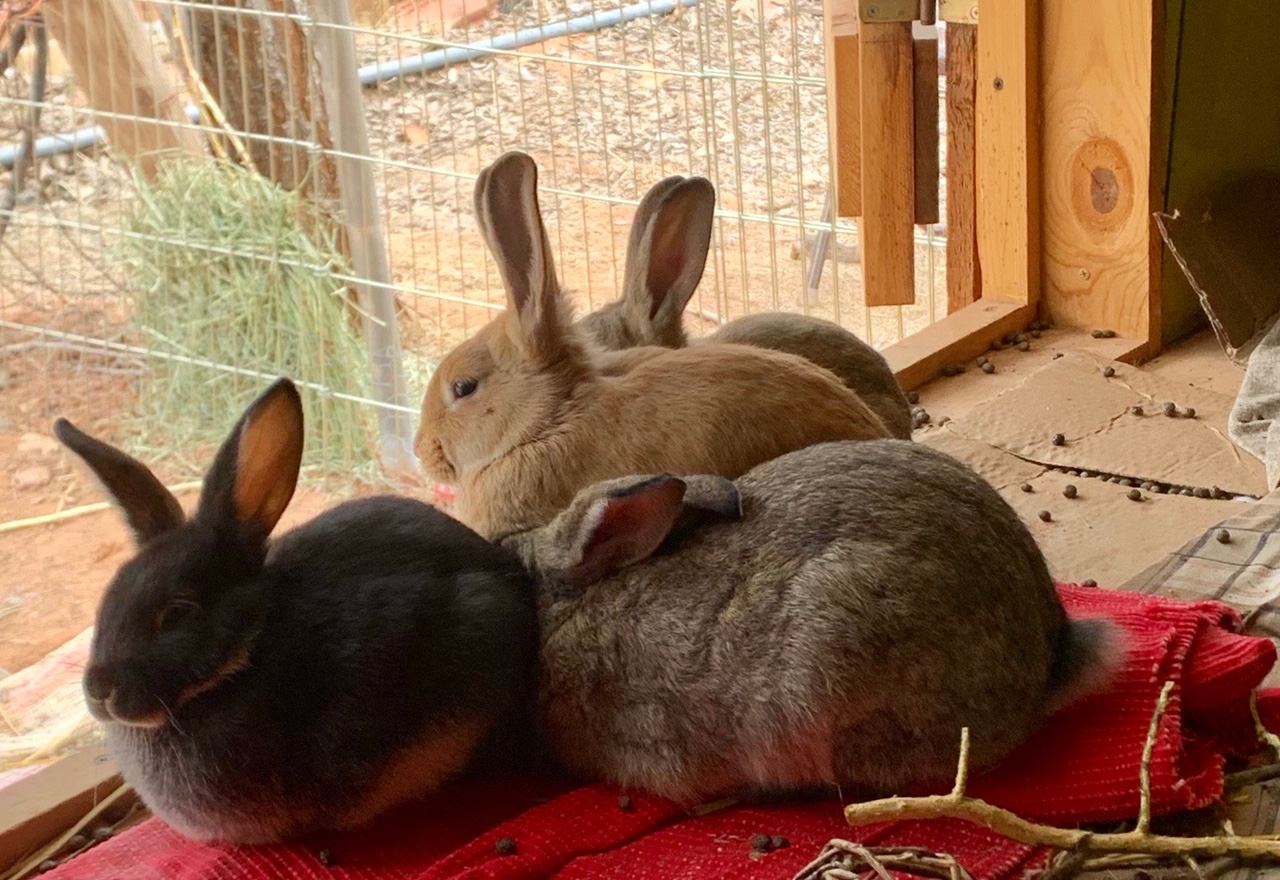Moab area resident Melissa Beaury became a rabbit-owner by happenstance.
“I just started last June when a rabbit had babies in my yard, and I caught what I could before the cats got them,” she said.
Beaury said that rabbits can be an easy and fun pet, but now she is concerned by a fatal virus spreading across the southwest, infecting both domestic and wild rabbits.
Rabbit Hemorrhagic Disease is caused by a virus with two strains, one that affects only domestic rabbits and a virulent strain that affects domestic rabbits and wild cottontail rabbits and jackrabbits, as well as other related wild species like hares and pikas.
RHDV2, the strain that affects both wild and domestic rabbits, was not seen in the U.S. until 2018. This year biologists have seen a widespread outbreak of RHDV2 spanning northern Mexico, New Mexico, Texas, Arizona, Colorado, Nevada, California, and recently, Utah.
The disease is highly lethal and acts quickly, sometimes killing rabbits within 9 days after infection. The mortality rate is 80-100%, and may or may not be attended by symptoms of fever and a bloody nose. Infected rabbits who survive the illness can continue infecting others for over a month, the Utah Department of Agriculture and Food reports.
Until recently, Monticello area resident Tom Wigginton raised rabbits to sell both for meat and as pets. He said he’s eaten rabbit regularly since he was a child, frying it with a coating of salt, pepper, flour and buttermilk.
Wigginton recently sold most of his 300 rabbits to another Utah rabbit farmer, and is continuing with a smaller business raising rabbits strictly as pets. Wigginton is keeping his herd away from wildlife and other rabbits to ensure they’ll be safe from infection.
In the wild
Wildlife experts say it’s too early to say what kind of effect RHDV2 might have on wild rabbit populations.
“The disease has only been in the US for a few months and I’m not sure we have enough information yet to really understand what it’s going to do,” said Dr. Annette Roug, wildlife veterinarian for the Utah Division of Wildlife Resources. “I think time will tell.”
Roug said the virus probably came to the U.S. through imported rabbits, and is likely spreading through the trade of domestic rabbits across borders as well as interactions between rabbits on the ground.
“It seems to be appearing more and more places,” she said.
“We don’t know where it’s going to pop up next; there are three places it’s occurred and they’re not spatially connected at all,” she added, noting that this fact supports the theory that transported domestic rabbits are a vector.
Faith Jolley, DWR public information officer, said the state has no plans to change rabbit hunting policies, but recommends hunters take caution.
“If you are in an area where [RHD] is suspected, make sure you’re thoroughly cleaning your clothes and your boots and your hands,” she advised, to keep from spreading virus particles that may be carried on skin or garments. The virus does not appear to affect other animals or humans, but if a rabbit is suspected of having an RHD infection, the DWR advises people not to consume the meat.
“Our recommendation is not to eat any rabbits suspected of being infected with RHDV-2, as a safety precaution,” Jolley said.
The recommendation is similar to the one the DWR has regarding Chronic Wasting Disease, a fatal illness that affects deer and other ungulates across the western U.S.: it isn’t known to affect people, but it is recommended to avoid eating meat from infected animals.
Jolley acknowledged that the DWR has a tougher challenge in tracking and checking the spread of the virus in wild populations than the UDAF has in monitoring domestic rabbits. The virus can only be detected if dead rabbits are found, and she noted that sometimes rabbits that feel sick will hide in their underground burrows before they die, making them less likely to be observed and tested.
“It’s kind of tricky for us because we’re primarily tracking and overseeing wild populations,” Jolley said. “There’s not a lot we can do to limit wild rabbits’ contact with other wild rabbits.”
For questions about RHD or to report a suspected case, contact, for domestic rabbits, your local veterinarian or the Utah State Veterinarian at 801-982-2235. For wild rabbits, contact the Southeastern regional office of the DWR at 435-613-3700.
Lethal rabbit virus native to Europe found in Utah
“We don’t know where it’s going to pop up next.”
– Annette Roug




